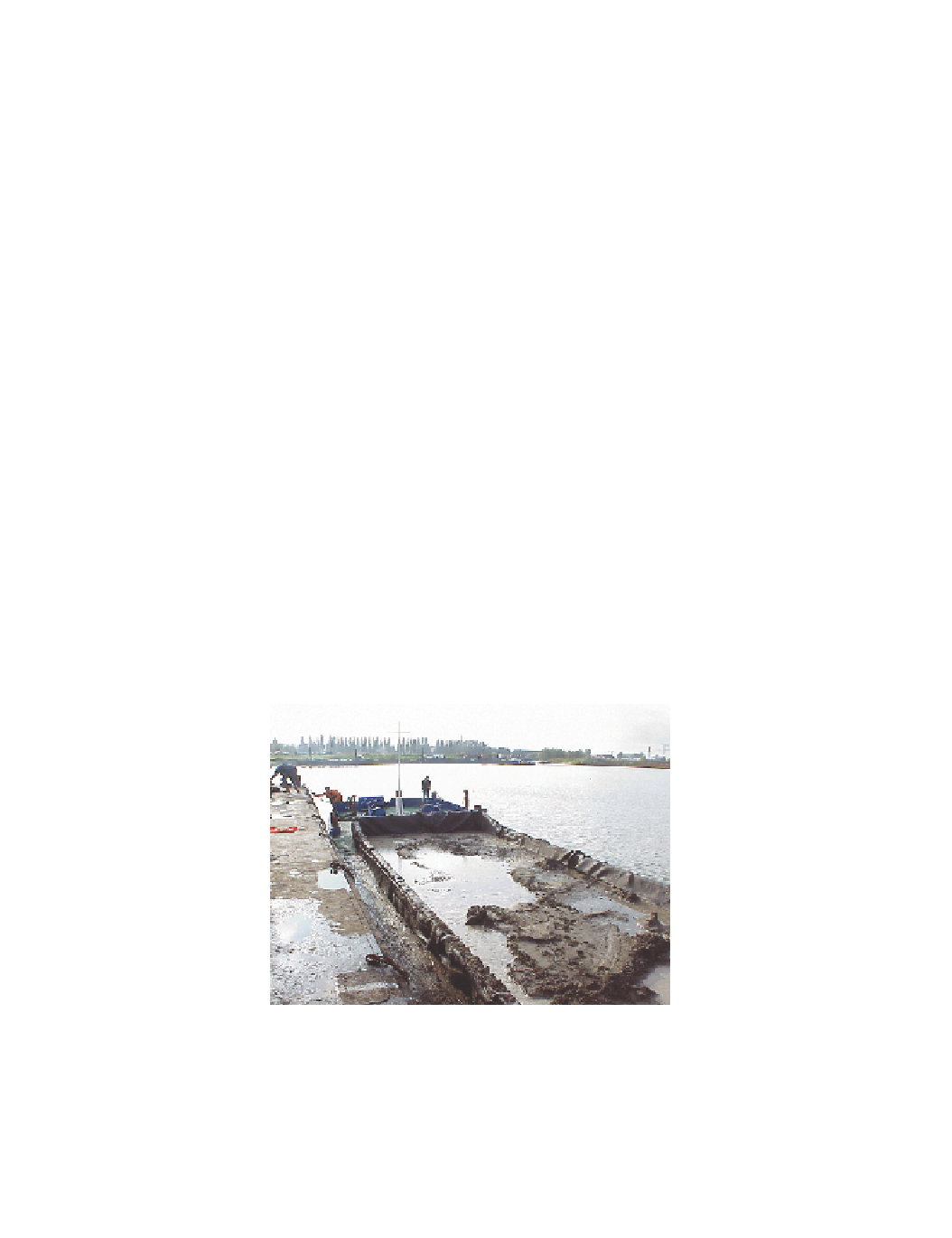Geoscience Reference
In-Depth Information
air in the fill material is compressible the pore pressure will hardly increase, and
thus the increase in external pressure will cause the effective stresses to increase.
The fill material thus temporarily contributes a greater shear resistance against the
deformation caused by impact, and thus reduces the load generated in the geotex-
tile. This has also been termed the 'Bezuijen effect' [15]. Since very little water can
flow into the voids during the very short time that the container falls, the increas-
ing external water pressure will result in an increase in the effective stress that is
approximately equal to the water pressure at depth, e.g. around 100 kPa at 10 m
water depth. The increase in the effective stress due to the impact has to be added
to that.
The field measurements at the Kandia Dam did not reveal the 'Bezuijen effect' but
showed for the container loaded with unsaturated sand a lot of the impact is 'taken'
by the effective stresses. This causes energy dissipation in the fill which was not the
case for the container with saturated sand.
To generate this effect requires the use of unsaturated sand-fill. When sand is
introduced into the bin the level of saturation will increase but not to full satura-
tion throughout the fill. To limit the load on the geotextile upon impact the use of
unsaturated sand also has the advantage that the submerged weight of the geotextile
container is lower, making the fall velocity and fall energy less than if saturated sand
were used. During filling the split barge the lowermost part of the sand will reach
a saturation of 80 to 90%. Some air will always be entrapped in the grain voids.
Field measurements have also revealed that air retained in the fill material reduces the
loading during impact. (see Figure 6.7 and Figure 6.8). It is important that the air that
escapes from the fill material can escape from the geotextile container. During one of
the field measurement trials air remained between the fill material and the geotextile,
and when the container was dropped, the air moved upwards causing the geotextile
container to fall at an angle.
Figure 6.7
Field measurements Kandia dam: Filling of the first instrumented
geotextile container for which no effective stress was measured
during the fall since the fill material is saturated with water.




